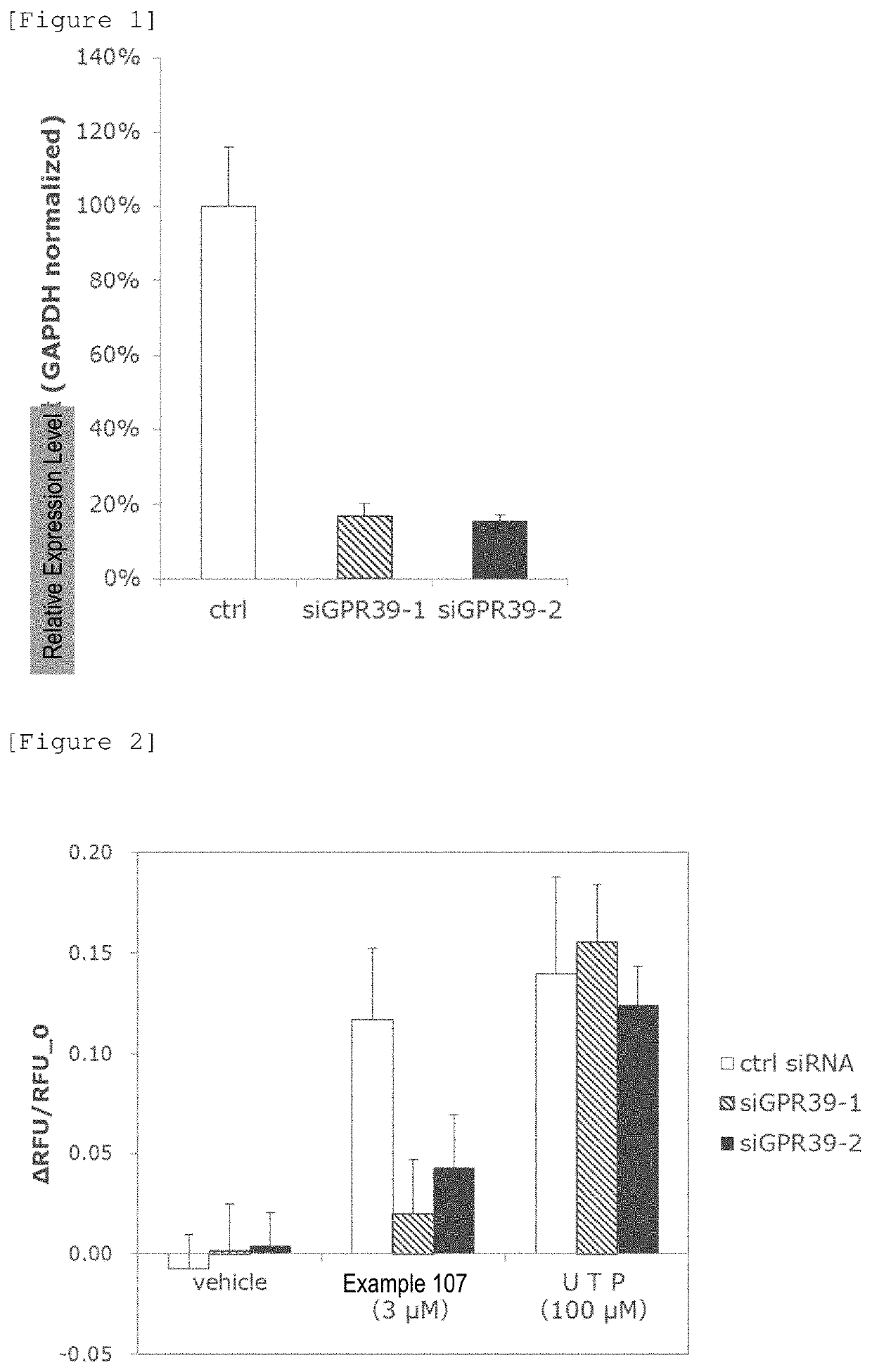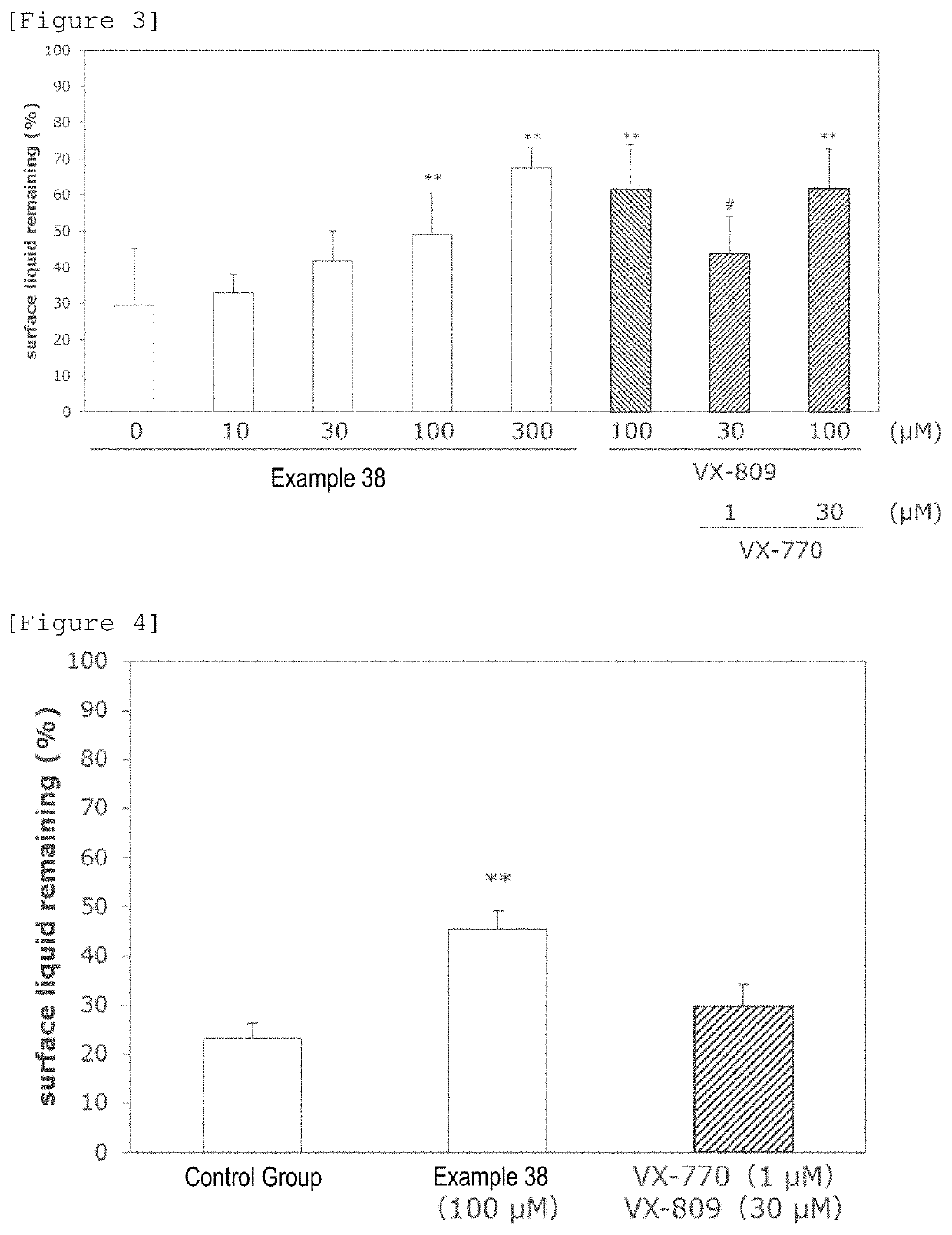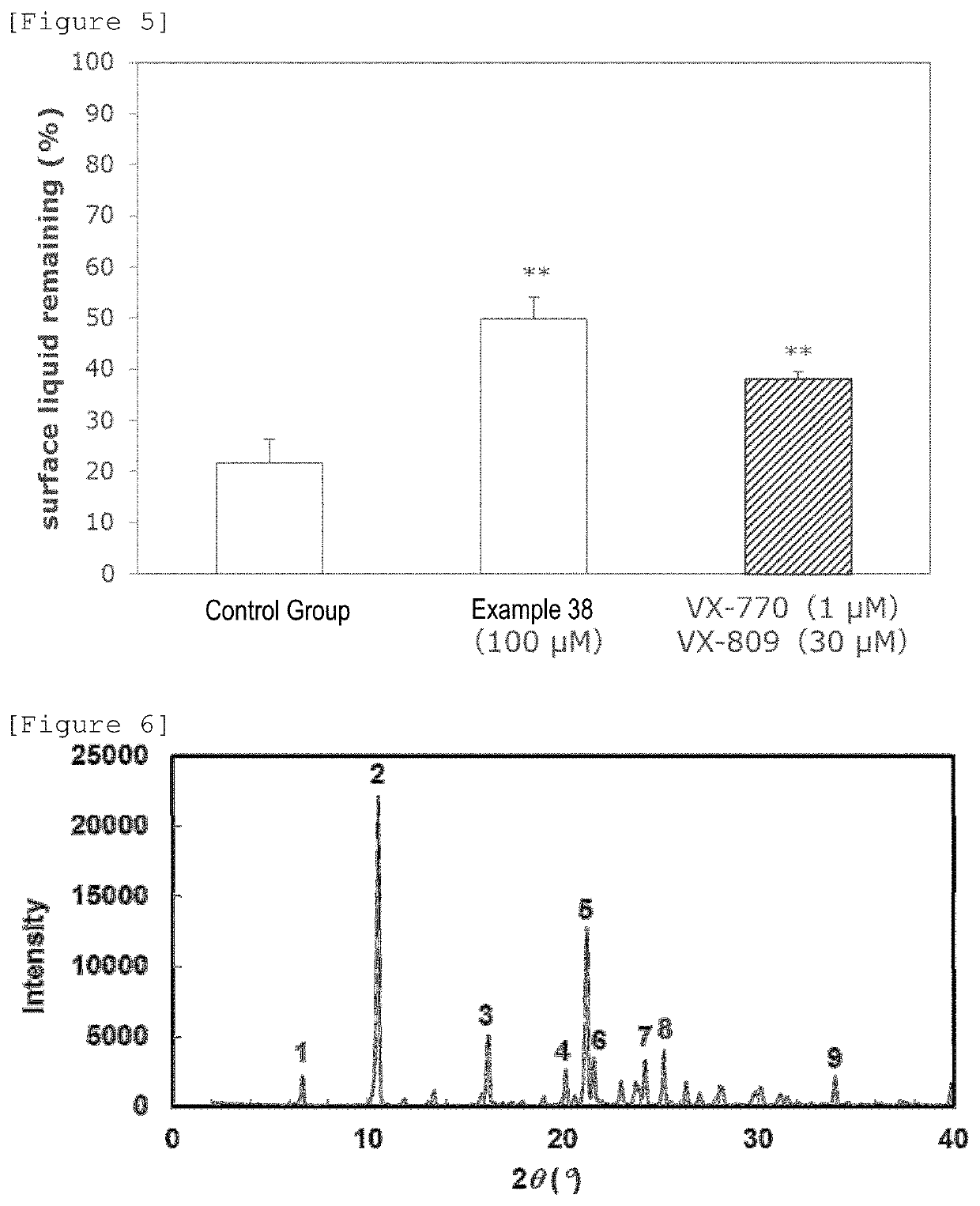Pyrimidine derivative
a technology of pyrimidine and derivatives, applied in the field of pyrimidine derivatives, can solve the problems of affecting the function of the lung,
- Summary
- Abstract
- Description
- Claims
- Application Information
AI Technical Summary
Benefits of technology
Problems solved by technology
Method used
Image
Examples
example 1
5-(2,4-Dichlorobenzyl)-4-(ethylamino)-6-methylpyrimidine-2-carboxylic acid hydrochloride
[0225]
[Step 1]
Methyl 2-(2,4-dichlorobenzyl)-3-oxobutanoate
[0226]To a solution of sodium methoxide (7.35 g) in tetrahydrofuran (188 ml), methyl 3-oxobutanoate (11.36 ml) was added under ice cooling under a nitrogen atmosphere, and the mixture was stirred at the same temperature as above for 30 minutes. 2,4-Dichlorobenzyl chloride (13 ml) was added dropwise to the reaction solution, and the mixture was heated to reflux for 18 hours. After cooling, a saturated aqueous solution of ammonium chloride was added to the reaction solution, followed by extraction with diethyl ether. The extract was washed with water and saturated saline in this order and then dried over anhydrous sodium sulfate. The solvent was distilled off under reduced pressure, and the residue obtained was purified by silica gel column chromatography (n-hexane / ethyl acetate) to obtain the title compound (12.8 g).
[0227]1H-NMR (CDCl3) δ: ...
example 5
5-(2,4-Dichlorobenzyl)-4-((3-isopropoxypropyl)amino)-6-methylpyrimidine-2-carboxylic acid
[0249]
[Step 1]
(5-(2,4-Dichlorobenzyl)-4-((3-isopropoxypropyl)amino)-6-methylpyrimidin-2-yl)methanol
[0250]To a solution of the compound (23 mg) obtained in step 4 of Example 1 in ethanol (1 ml), 3-isopropoxypropan-1-amine (51 μl) and N,N-diisopropylethylamine (126 μl) were added, and the mixture was stirred at 90° C. for 22 hours. The reaction solution was concentrated under reduced pressure, and the residue obtained was purified by silica gel column chromatography (chloroform / methanol) to obtain the title compound (25 mg), which was used in the next reaction as it was.
[Step 2]
5-(2,4-Dichlorobenzyl)-4-((3-isopropoxypropyl)amino)-6-methylpyrimidine-2-carboxylic acid
[0251]To a solution of the compound (25 mg) obtained in step 1 above in 2-propanol (63 μl), chromium(VI) oxide (2.5 M solution in sulfuric acid, 25 μl) was added under ice cooling, and the mixture was stirred at room temperature for 1 h...
example 6
5-(2,4-Dichlorobenzyl)-4-((2-hydroxy-2-methylpropyl)amino)-6-methylpyrimidine-2-carboxylic acid
[0254]
[Step 1]
5-(2,4-Dichlorobenzyl)-4-((2-hydroxy-2-methylpropyl)amino)-6-methylpyrimidine-2-carboxylic acid
[0255]To a solution of the compound (28.6 mg) obtained in step 5 of Example 1 and 1-amino-2-methylpropan-2-ol (35 mg) in tetrahydrofuran (1 ml), N,N-diisopropylethylamine (0.15 ml) was added, and the mixture was stirred at 70° C. for 4 hours. The reaction solution was concentrated under reduced pressure, and the residue obtained was dissolved in chloroform. Acetic acid (0.15 ml) was added to the solution, followed by extraction with water. The extract was washed with ethyl acetate and then concentrated under reduced pressure. The residue obtained was purified by column chromatography (chloroform / methanol) using diol-modified silica gel to obtain the title compound (5.1 mg).
[0256]1H-NMR (CDCl3) δ: 1.06 (6H, s), 2.38 (3H, s), 3.31-3.51 (2H, br m), 3.86 (2H, s), 4.92 (1H, br s), 6.73 (...
PUM
| Property | Measurement | Unit |
|---|---|---|
| boiling point | aaaaa | aaaaa |
| temperature | aaaaa | aaaaa |
| boiling point | aaaaa | aaaaa |
Abstract
Description
Claims
Application Information
 Login to View More
Login to View More - R&D
- Intellectual Property
- Life Sciences
- Materials
- Tech Scout
- Unparalleled Data Quality
- Higher Quality Content
- 60% Fewer Hallucinations
Browse by: Latest US Patents, China's latest patents, Technical Efficacy Thesaurus, Application Domain, Technology Topic, Popular Technical Reports.
© 2025 PatSnap. All rights reserved.Legal|Privacy policy|Modern Slavery Act Transparency Statement|Sitemap|About US| Contact US: help@patsnap.com



